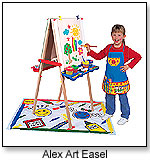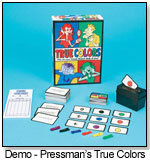
April 2, 2025


| “I can have a product that doesn’t move in six months, then move it to another spot and sell out of them.” — Tim Gessner, Deep River Toy Co. |
 overwhelming hits, and even good toys are sometimes hard sells. So, what should you do when you’re stuck with stock? Sixty-four retailers shared with TDmonthly Magazine their methods for putting stubborn toys on the move.
overwhelming hits, and even good toys are sometimes hard sells. So, what should you do when you’re stuck with stock? Sixty-four retailers shared with TDmonthly Magazine their methods for putting stubborn toys on the move. Ten other retailers also said they prefer to change a display or move stock to a different location in the store if it’s not selling. “If it’s a game, we’ll set up a demo,” added Amanda Melemedi, manager of The Toy Box in Amherst, Mass.
Ten other retailers also said they prefer to change a display or move stock to a different location in the store if it’s not selling. “If it’s a game, we’ll set up a demo,” added Amanda Melemedi, manager of The Toy Box in Amherst, Mass. 5. Try Selling Online. “Our company does a pretty significant amount of business with actual vintage toys on eBay, so we also will sometimes dump stock, if it’s unique, onto eBay,” said Dave Brisbois, owner of The Toy Dept. in Pasadena, Calif.
5. Try Selling Online. “Our company does a pretty significant amount of business with actual vintage toys on eBay, so we also will sometimes dump stock, if it’s unique, onto eBay,” said Dave Brisbois, owner of The Toy Dept. in Pasadena, Calif.
Copyright © 2025 TDmonthly®, a division of TOYDIRECTORY.com®,
Inc.